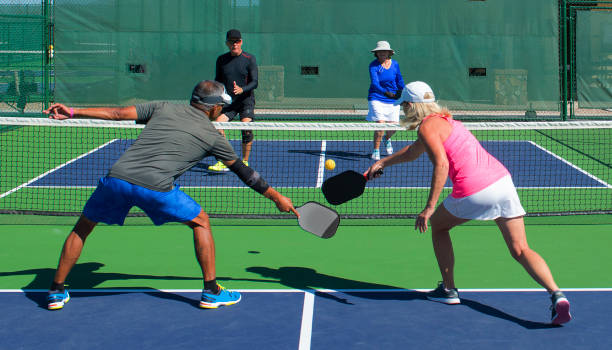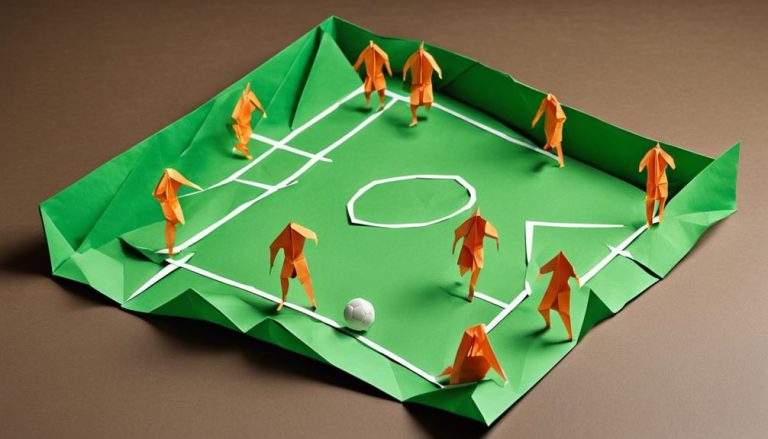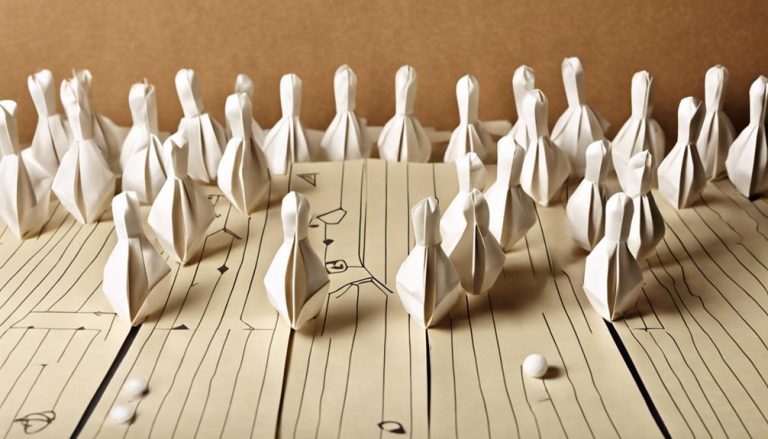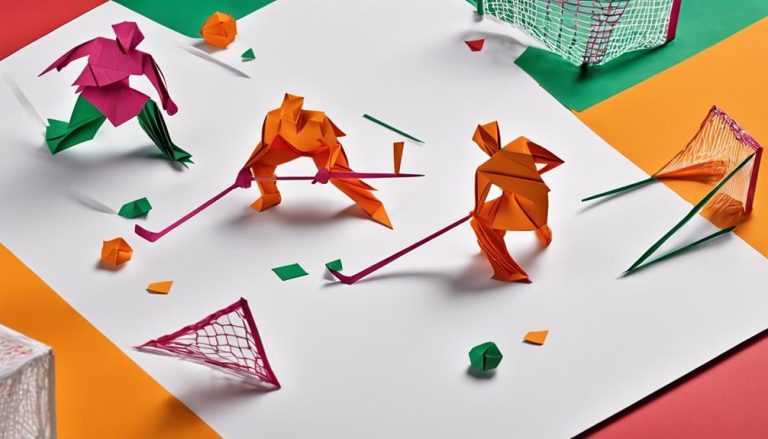General Rules of Roller Hockey
If you think roller hockey rules are just a walk in the park, think again. From equipment requirements to player positions, there's more to this game than meets the eye. Are you ready to lace up your skates and hit the rink? Let's break down the essential guidelines that will keep you on your toes in the fast-paced world of roller hockey.
Equipment Requirements
When gearing up for roller hockey, make sure you have the necessary equipment to stay safe and perform at your best on the rink. Safety gear is essential in roller hockey to protect yourself from potential injuries. Make sure to wear a helmet with a cage or visor to shield your face and eyes. Elbow pads, knee pads, and gloves are important to prevent scrapes, cuts, and bruises. Invest in quality shin guards to shield your lower legs from hard impacts. A mouthguard is also essential to protect your teeth and jaws during intense gameplay.
Now, let's talk about stick handling. In roller hockey, stick handling is a fundamental skill that can make or break your performance on the rink. Choose a stick that feels comfortable and suits your playing style. Practice your grip and control over the stick to maneuver the ball effectively. Work on your dribbling, passing, and shooting skills to become a versatile player on the rink. Remember to keep your head up, stay agile on your feet, and anticipate your opponents' moves to outsmart them during gameplay.
Game Duration
To fully understand roller hockey, it's important to grasp the specifics of game duration. Roller hockey games are typically divided into two halves, each lasting a specified amount of time. The standard duration for each half is usually 20 minutes, with a short intermission in between known as the half time break. During this break, players can rest, rehydrate, and strategize for the upcoming half.
In the event of a tie at the end of regulation time, overtime rules come into play. Overtime in roller hockey is often sudden death, meaning the first team to score wins the game. Overtime periods are generally shorter than regular game halves, commonly lasting around 5 to 10 minutes, depending on the league or competition rules. Teams usually have fewer players on the rink during overtime to increase scoring opportunities and intensify the gameplay.
Understanding game duration is critical for players and spectators alike. It adds an element of excitement, knowing that every second counts in a fast-paced sport like roller hockey. So, whether you're on the rink or cheering from the sidelines, keep an eye on the clock and be prepared for the thrill of overtime if the game remains undecided at the end of regulation time.
Player Positions
In roller hockey, understanding the various player positions is essential for grasping the strategic dynamics of the game and maximizing team performance. When it comes to player positions, roller hockey typically involves five players per team on the rink at a time: three forwards and two defensemen. The forwards are responsible for the offensive strategies, aiming to score goals and create scoring opportunities for their team. They need to have good stickhandling, shooting, and passing skills. On the other hand, the defensemen focus more on defensive tactics, aiming to prevent the opposing team from scoring. They should excel in blocking shots, intercepting passes, and clearing the puck out of their defensive zone.
The center forward, often the most versatile player, plays a key role in both offensive and defensive aspects of the game. They are key in shifting the play from defense to offense and vice versa. The two wingers, one on each side of the center forward, provide support in attacking the opponent's goal. Defensively, they need to backcheck and support the defensemen. The defensemen, positioned in front of their own goal, serve as the last line of defense. They must work cohesively with the goalkeeper and focus on thwarting the opponent's offensive plays. Mastering these player positions is important for a well-rounded team performance in roller hockey.
Scoring System
When it comes to the scoring system in roller hockey, understanding how goals are worth points and how assists play a role can greatly enhance your gameplay. Each goal scored contributes points to your team's total, while assists earn recognition for setting up those important plays. Mastering the scoring system can lead to a more strategic and successful approach on the rink.
Goal Worth Points
Scoring points in roller hockey is determined by the value assigned to each goal scored during the game. Typically, a goal in roller hockey is worth one point. However, in some leagues or tournaments, different values might be assigned to goals. Here's a breakdown of the goal worth points in roller hockey:
| Goal Type | Points |
|---|---|
| Regular Goal | 1 |
| Power Play Goal | 2 |
| Empty Net Goal | 1 |
Understanding the point system can help you strategize your gameplay. Whether you focus on quick offensive plays, power plays, or defensive tactics to prevent goals, knowing the value of each goal can impact your team's overall strategy. Stay tuned for more insights on scoring in roller hockey!
Assist Earns Recognition
Earning an assist in roller hockey not only showcases your teamwork skills but also plays an essential role in the scoring system. In roller hockey, an assist is awarded to the player who passes the puck to the goal scorer. This recognition acknowledges the importance of player dynamics and collaboration in achieving a goal. Assists reflect the seamless coordination and communication between teammates, highlighting the shared effort in creating scoring opportunities. Not only does an assist contribute to the team's success, but it also adds depth to individual player statistics, recognizing the vital role of support and cooperation in the game. Understanding the value of assists emphasizes the significance of teamwork in roller hockey and encourages players to work together towards a common goal.
Face-Offs
When preparing for a face-off, your positioning plays an important role in gaining an advantage over your opponent. Timing the face-off just right can give your team the upper hand in gaining possession of the puck. By employing strategic moves and tactics, you can increase your chances of winning the face-off and gaining control of the game.
Positioning During Face-Offs
During face-offs in roller hockey, players must strategically position themselves to gain an advantage over their opponents. Face-off tactics and positioning are pivotal elements that can determine the outcome of the play. When setting up for a face-off, defensive strategies come into play for the team tasked with winning possession. Players in defensive positions need to be ready to react quickly and disrupt the opponent's plans. On the other hand, offensive tactics are essential for the team trying to gain control of the puck. Offensive players must anticipate the drop of the puck and make quick moves to secure possession. Proper positioning during face-offs is key to gaining the upper hand and initiating a successful play in roller hockey.
Timing the Face-Off
To optimize your team's chances of winning face-offs in roller hockey, mastering the timing of the drop is important for gaining possession and executing strategic plays effectively. When it comes to timing the face-off, consider the following:
- Anticipate the Drop: Watch the referee's hand movement closely to anticipate when the puck will be released. Reacting quickly can give your team the upper hand in gaining possession.
- Quick Release: As soon as the puck is dropped, use swift hand-eye coordination to try and gain control of it before your opponent does. This quick technique can catch the other team off guard, giving you an advantage.
- Stay Focused: Keep your eyes on the puck and your opponent's movements. By staying focused and alert during the face-off, you can react promptly to any changes and adapt your strategy accordingly.
Strategies for Winning
For better success in face-offs in roller hockey, employing effective strategies is important to gain an advantage over your opponents and secure possession of the puck. When it comes to defensive tactics, a key approach is to use your body to block your opponent's movements and prevent them from easily accessing the puck. On the offensive side, quick reflexes and anticipation can help you gain control of the puck swiftly. Team communication is essential during face-offs; make sure that your teammates are ready to support you in winning possession. Individual skills such as stickhandling and quick decision-making play an important role in determining the outcome of face-offs. By combining defensive tactics, offensive strategies, effective team communication, and honed individual skills, you can significantly increase your chances of winning face-offs.
| Defensive Tactics | Offensive Strategies | Team Communication | Individual Skills |
|---|---|---|---|
| Use body to block opponent | Quick reflexes | Coordinate with teammates | Stickhandling |
| Prevent easy access to puck | Anticipation | Ensure readiness | Quick decision-making |
Penalties and Fouls
When a player commits a penalty or foul in roller hockey, it results in consequences that can impact the flow and outcome of the game. Here's what you need to know about penalties and fouls:
- Referee Discretion: Referees have the authority to determine the severity of a penalty based on the infraction. They can issue warnings, minor penalties, or even ejections for player misconduct. It's important to respect the officials' decisions to maintain fair play on the rink.
- Penalty Box: When a player is penalized, they must serve time in the penalty box, leaving their team short-handed. This creates an opportunity for the opposing team to go on a power play, where they have more players on the rink than their opponents. It's essential for teams to strategize and defend effectively during these situations to prevent the opposing team from scoring.
- Power Play Opportunities: When your team has a power play due to an opponent's penalty, it's your chance to capitalize on the advantage. Work on quick puck movement, precise shots, and offensive pressure to increase your chances of scoring. Power plays can shift the momentum of the game in your favor if executed correctly.
Understanding penalties and fouls in roller hockey is important for players to maintain sportsmanship, adapt to changing game dynamics, and make the most of power play opportunities.
Offsides and Icing
Understanding the rules of offsides and icing is essential for players to maintain proper positioning and strategic gameplay in roller hockey. In roller hockey, offsides occur when an offensive player enters the attacking zone before the puck. This rule is critical in promoting fair play and preventing teams from gaining an unfair advantage by cherry-picking near the opponent's goal. By adhering to offsides regulations, teams can execute well-thought-out offensive tactics and avoid penalties that may halt their momentum.
Icing, on the other hand, is a rule designed to prevent teams from simply shooting the puck down the rink to relieve pressure. Icing is called when a player shoots the puck from behind the center line all the way to the opponent's goal line without it being touched by another player. This rule encourages strategic gameplay by penalizing teams that resort to defensive strategies without attempting to advance the play. It forces teams to engage in offensive tactics, promoting an exciting and dynamic style of play that keeps fans on the edge of their seats.
Maintaining awareness of offsides and icing rules is fundamental for successful line changes and strategic maneuvering on the rink. By mastering these regulations, players can enhance their offensive strategies, capitalize on scoring opportunities, and keep the game fast-paced and exhilarating.
Overtime and Shootouts
As you immerse yourself into the world of overtime and shootouts in roller hockey, brace yourself for heightened moments of skill and strategy under pressure. When a game is tied at the end of regulation time, the excitement continues into overtime and possibly a thrilling shootout.
- Strategy Adjustments
During overtime, teams often make quick strategic adjustments to capitalize on any weaknesses they have observed in their opponents. Players need to be adaptable and ready to switch tactics on the fly to gain the upper hand. Whether it's tightening up defense, focusing on quick adjustments, or taking more shots on goal, strategic decisions play a critical role in overtime success.
- Referee Decisions
In overtime and shootouts, the role of the referees becomes even more critical. Referees must make swift and accurate decisions to guarantee the game's fairness and integrity. From calling penalties to determining the validity of goals, their judgments can have a significant impact on the outcome of the game. Players must also be aware of the rules and regulations to avoid costly penalties that could decide the game.
- Nail-Biting Shootouts
If the game remains tied after overtime, a thrilling shootout ensues. Each team selects a few players to take penalty shots against the opposing goalie. Shootouts require not only skill and precision but also nerves of steel. It's a high-stakes battle of wits between the shooters and the goaltenders, creating intense moments that keep fans on the edge of their seats.
Frequently Asked Questions
Can Players Wear Any Type of Footwear, or Are Specific Roller Hockey Skates Required?
You must wear roller hockey skates for safety and performance. While some players may try other footwear, skate preferences are fundamental due to equipment regulations. Stick with the proper gear for a better game.
Are There Any Restrictions on the Type of Stick That Players Can Use in Roller Hockey?
You can use various types of sticks in roller hockey, but they must adhere to specific regulations. Player equipment is essential, and the stick you choose should meet safety standards while allowing you to play effectively.
Are Goalies Required to Wear Specific Protective Gear, or Can They Wear Regular Player Equipment?
When it comes to goalie gear in roller hockey, protective requirements are essential. While goalies can wear regular player equipment, specialized gear like helmets, chest protectors, leg pads, and gloves are recommended for maximum safety.
Is Body Checking Allowed in Roller Hockey, or Are There Specific Rules Regarding Physical Contact?
In roller hockey, body checking is usually not allowed. Specific checking rules prioritize safety and fair play. Players must stick to legal forms of physical contact to avoid penalties. Remember, respecting these regulations keeps the game enjoyable for everyone.
Are There Any Regulations on the Size and Weight of the Puck Used in Roller Hockey Games?
In roller hockey, regulations govern the puck's material, size, and weight. The puck must meet specific design requirements, including color and texture. Ensuring proper equipment standards enhances gameplay and player safety.






